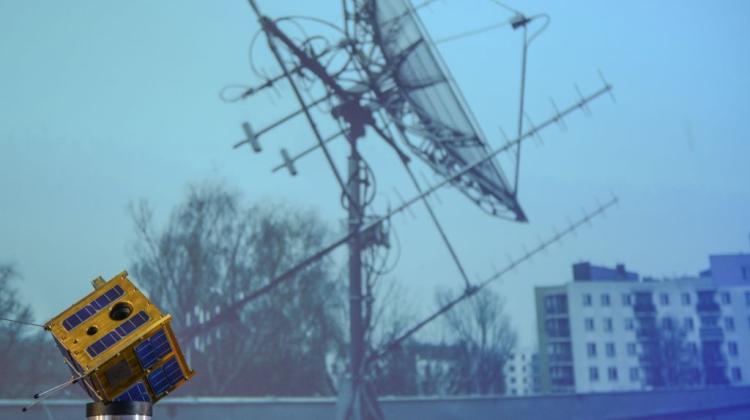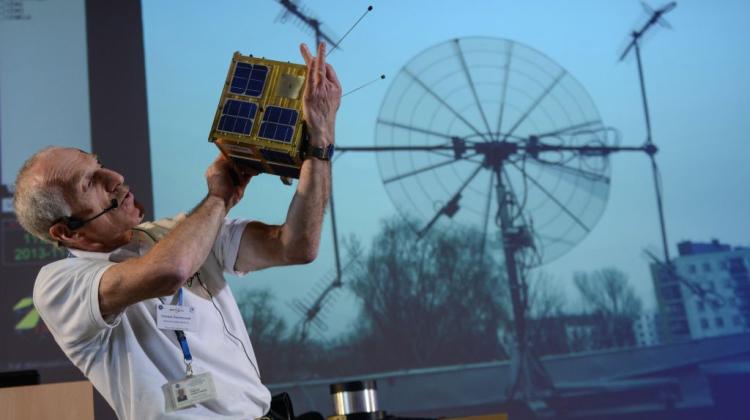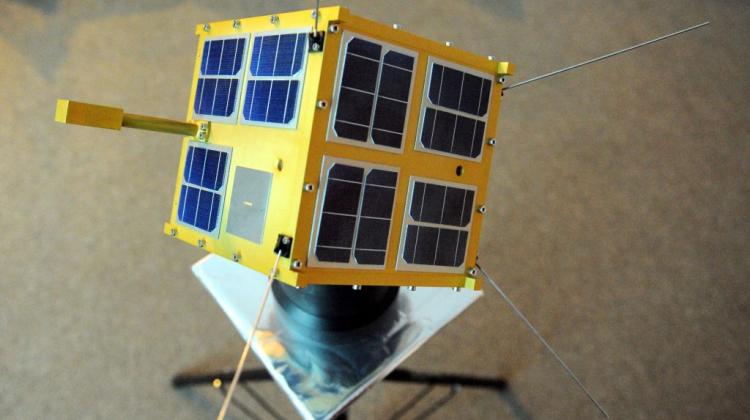Scientific satellite Lem already in space, scientists have established communication

The first Polish scientific satellite Lem is already in space. It was carried into space on Thursday at approx. 8:10 by a Russian Dnepr rocket from the military base Jasny in the Urals. Around 10:00, scientists made contact with Lem.
The satellite detachment from the launch vehicle took place 15 minutes and 50 seconds after launch, at an altitude of 650 km over the Indian Ocean.
"The first connection with Lem satellite was established at 9:48. The satellite responded that it was operational, everything was in order" - Dr. Piotr Orleański told reporters gathered at the Nicolaus Copernicus Astronomical Center PAS in Warsaw. Second communication, scheduled after 11:00 hours, could not be established, but, as the scientist assured, this was not alarming. "The process of establishing effective communication in orbit may take several months" - he explained.
Communications with the satellite will be established by the ground control station located at the Nicolaus Copernicus Astronomical Center PAS in Warsaw. From here, researchers will send commands to the satellite and also here they will collect the operational and scientific data of the mission.
Lem and the second Polish satellite Hevelius (whose launch is scheduled for December 29) have been developed in collaboration with the University of Vienna, Graz University of Technology, the University of Toronto and the University of Montreal. Ministry of Science and Higher Education allocated PLN 14.2 million to their construction.
"This is one of the most ambitious Polish research projects. It paves the way to obtaining breakthrough scientific results" - emphasized Minister of Science Prof. Barbara Kudrycka in response to the successful launch of Lem.
The task of Lem - cube weighing less than 7 kg, with 20 cm side - in the next few years will be the measurement of 286 brightest stars in the sky. The study will provide key information about the internal structure of stars. Such research can not be accurately performed from Earth. The main obstacle is the Earth\'s atmosphere, which causes rippling interference.
Dnepr rocket, which carried Lem into space, is a former military rocket. Now, instead of nuclear head, it carried a different cargo. In this case, it was more than 20 communications and scientific satellites. One of them was Polish Lem.
Lem and Hevelius are so-called nanosatellites, objects with very small sizes. They were built for the international BRIght Target Explorer Constellation - BRITE project. They were developed by experts at the Centre for Space Research PAS and the Nicolaus Copernicus Astronomical Center PAS. Two Austrian and two Canadian satellites also participate in BRITE.
PAP - Science and Scholarship in Poland
ekr/ agt/ ura/ mrt/
tr. RL
Przed dodaniem komentarza prosimy o zapoznanie z Regulaminem forum serwisu Nauka w Polsce.


















